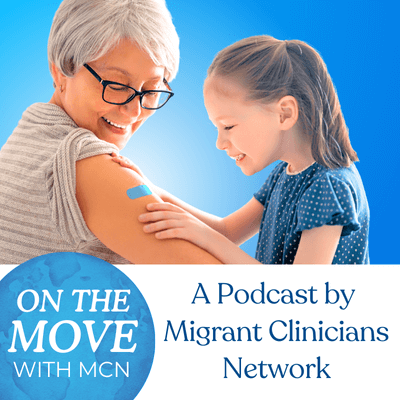Worker Safety & Health: What Barriers do Primary Care Providers Encounter?

[Editor’s Note: It is bittersweet to share the publishing of MCN’s most recent article. The NIOSH-supported research project featured in this article was championed by Leslie Nickels, a worker safety and health champion and friend of MCN, who passed away at the end of last year.]
James, a 36-year-old, arrives at the clinic with out-of-control diabetes, chronic back pain, depression, and asthma. Which of these health concerns might be linked to his job as a meat packer? And does the primary care provider who sees James have what she needs in terms of training and resources to make any occupational connections during the clinic encounter?
Migrant Clinicians Network set out to determine how occupational health is integrated into primary care through our project, “Occupational Health in Community Health Centers,” funded by the National Institute for Occupational Safety and Health. Juliana Simmons, MSPH, CHES, Program Manager for Environmental and Occupational Health, coordinated this project. Now, joined by co-authors Amy K. Liebman, MPA, MCN Director of Environmental and Occupational Health, and Rosemary Sokas, MD, MOH, a member of MCN’s Board of Directors, Simmons has published a new article that reviews the project’s results.
“We used MCN’s network of health centers to identify two partners in different geographic areas with different worker populations -- one had mostly farmworkers, and one had more factory and meatpacking workers,” said Simmons. “We then went out and did informational interviews and focus groups with all levels of staff -- intake workers, medical assistants, midwives, doctors, CEOs, CFOs, every level we could reach -- to see how they currently address occupational health and if there were challenges to incorporating it into their practice.”
The MCN team also did focus groups with “key informants”, including one with MCN’s Board of Directors, which is comprised of clinicians from around the country, and one with Community Health Workers. This project was guided by a diverse advisory committee that included clinicians, researchers, labor representatives and health centers administrators.
The results were published this month in New Solutions, a peer-reviewed journal focused on environmental and occupational health policy. The study uncovered providers’ strong interest in addressing worker health -- and a clear connection that providers recognized between occupational health and behavioral health, like how chronic stress at work may affect a patient’s depression. But providers expressed concern due to a lack of training in environmental and occupational medicine, and felt that work-related issues were harder to detangle and address. “They’re swamped with addressing the patient’s diabetes and chronic health issues, and job-related issues can be challenging. Many felt intimidated by completing workers’ compensation paperwork,” Simmons noted. Without systems in place to prompt clinicians and help them efficiently move a patient with a work-related injury, clinicians told the researchers that the barriers often felt too high to effectively address worker health. The paper explores the barriers, even when the primary care provider may be the only source of occupational health the patient will ever encounter.
The paper is available at the New Solutions site at https://doi.org/10.1177/1048291117749937. You can read about many of MCN’s worker health programs at our Environmental and Occupational Health page.
Like what you see? Amplify our collective voice with a contribution.
Got some good news to share? Contact us on our social media pages above.
Return to the main blog page or sign up for blog updates here.
- Log in to post comments






